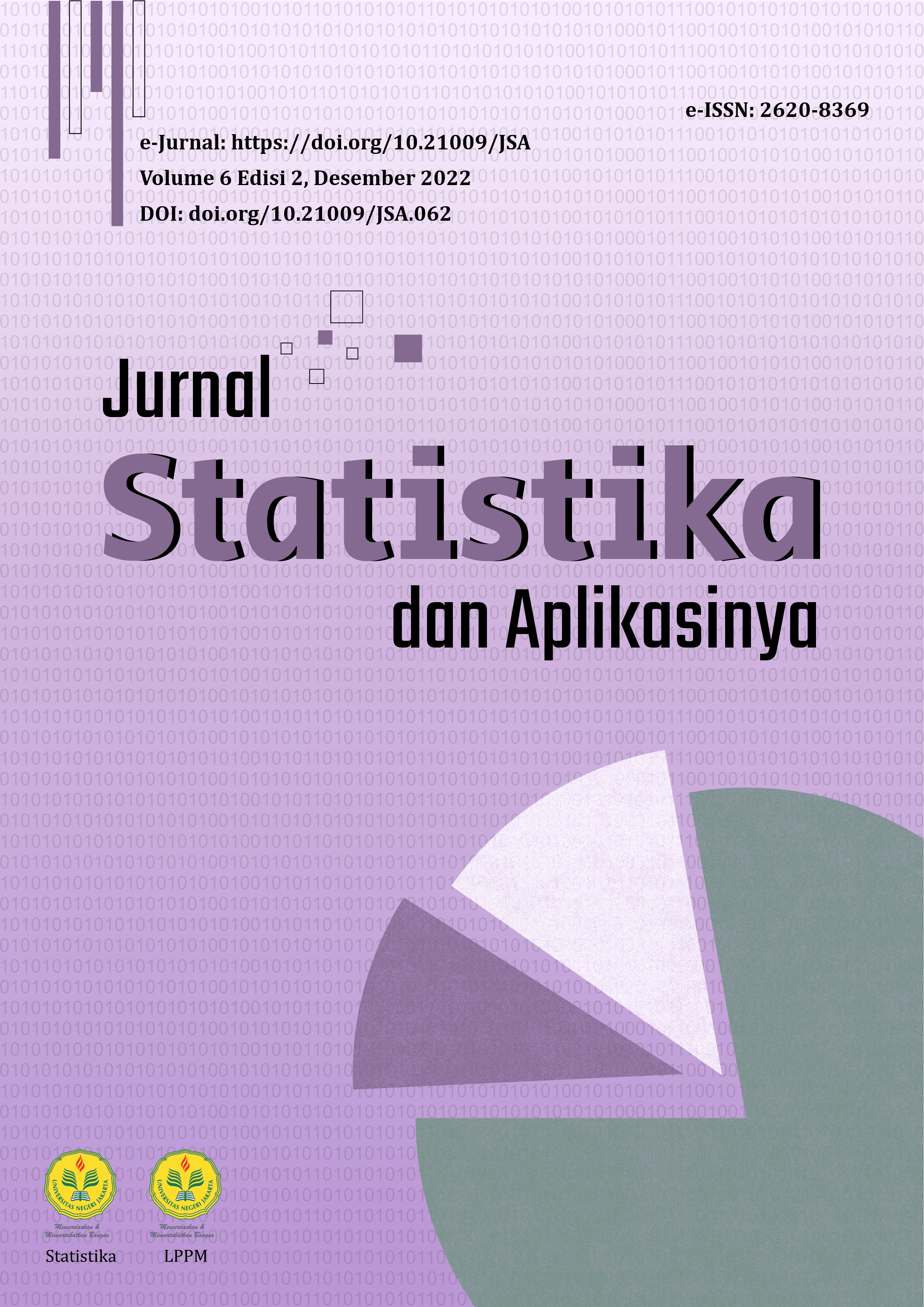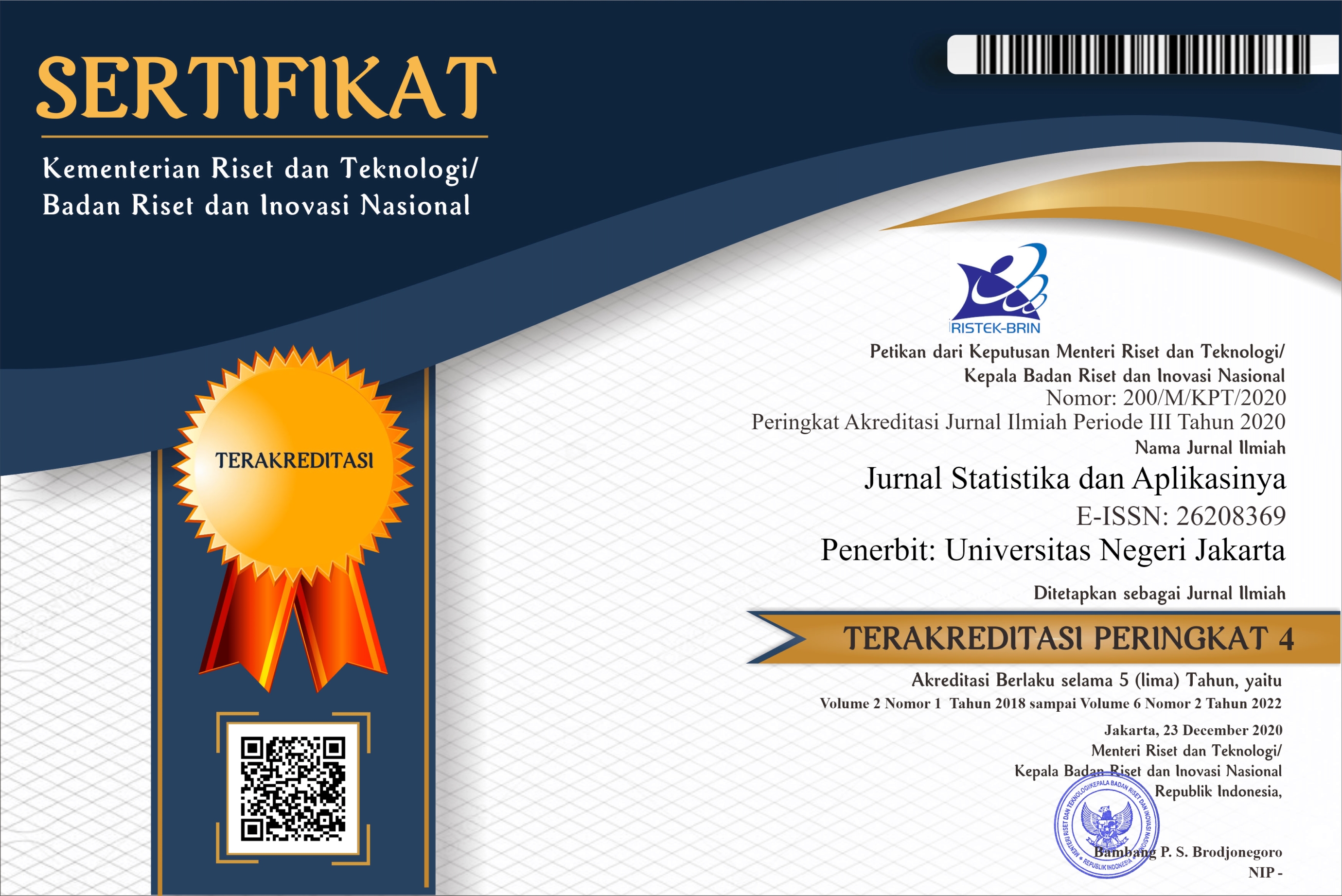Penerapan Analisis Regresi Logistik Ordinal pada Asuransi Kredit Perdagangan Domestik
DOI:
https://doi.org/10.21009/JSA.06220Keywords:
domestic trade credit insurance, ordinal logistic regression, premium rate groupAbstract
One of the main activities that support the national economy is domestic trade. However, domestic trade is faced with various risks. One risk is that the buyer fails to fulfil his obligation to pay. The seller can overcome this risk by purchasing a domestic trade credit insurance product from an insurance company. The premium rate must be calculated correctly so that the insurance company does not suffer losses. Premium rates can be grouped based on several factors. Ordinal logistic regression analysis can be used to group premium rates and identify factors that affect premium rate groups. The maximum likelihood method can be used to estimate the parameters of the ordinal logistic regression model. In this study, two logit models were produced, and the premium rate group was significantly affected by the payment tenor, central credit limit, and the type of commodity. Overall, the classification accuracy value generated from the ordinal logistic regression model that has been built is 57.45%.






